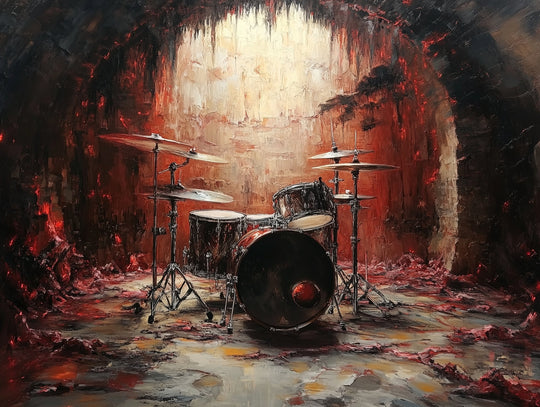How to Build Dynamic MIDI Drum Patterns for Any Genre
How to Build Dynamic MIDI Drum Patterns for Any Genre
Blog Article
MIDI drum habits are in the key of modern audio production. They allow artists and companies to produce energetic, functional beats that drive a track's rhythm. Whether you're a starter or a professional producer, knowledge the fundamentals of making midi drum patterns can elevate your audio generation skills. That manual addresses everything you need to know—from standard concepts to sophisticated techniques—to hobby powerful drum designs tailored to your music.
What Are MIDI Drum Designs?
MIDI (Musical Tool Electronic Interface) drum habits are digitally created sequences of drum defeats programmed in a DAW (Digital Sound Workstation). Unlike noted music, MIDI information contains information regarding the moment, pitch, pace, and duration of notes, providing total control around all facets of the beat.
With MIDI, suppliers may try out countless drum products, modify rhythms, and layer appears to create beats for types including hip-hop to electronic to rock. The flexibility of MIDI causes it to be an important software for audio production.

The Creating Prevents of a Drum Sample
Developing a great MIDI drum pattern begins with understanding the components of a drum kit and their roles in shaping beat:
Stop Drum: Types the foundation of the beat. It offers the thud or low-end strike that pushes the rhythm.
Snare Drum:Gives energy and emphasis, usually producing the click sound noticed on the next and 4th beats in several genres.
Hi-Hats: These come in two forms (closed and open) and add dance and difference with regular patterns.
Toms: Fill out changes or include character to your patterns.
Crash and Journey Cymbals: Used for highlights and to tag transitions inside a song.
Measures to Build MIDI Drum Patterns
Step 1: Focus on a Fundamental Design
Set down an easy 4/4 beat. Use a end drum on defeats 1 and 3 and a snare on defeats 2 and 4. Put regular hi-hats on every eighth observe to keep the beat moving. That establishes a powerful foundation.
Step 2: Put Complexity
After your standard rhythm is in place, introduce variation. Put offbeat hi-hat visitors, ghost notes on the snare, or syncopation to produce a groove that feels alive and engaging.
Stage 3: Concentrate on Speed and Humanization
One common problem with MIDI drum designs is that they can noise robotic if every notice is performed at the exact same velocity. Change velocities to simulate the character of a real drummer's performance. Furthermore, try out small time shifts to humanize the rhythm.
Step 4: Integrate Fills and Transitions
Drum fills are important for noticing changes between tune sections. Use tom rolls, snare floods, or cymbal crashes to include excitement and action to your designs, keeping fans engaged.

Stage 5: Test out Genres
Investigate various types to grow your understanding of drum patterns. Hip-hop beats may possibly function swung hi-hats and syncopated shoes, while digital music frequently utilizes delicate grid-based development and split percussion.
Strategies for Elevating Your Defeats
Coating Your Appears: Combine samples or drum sounds to produce richer, more uneven beats.
Use Outcomes Tastefully: Add reverb, delay, or pressure to specific drum things for an even more polished sound.
Study True Drummers: Analyze drum shows in your favorite tracks to understand dance and flow styles better.
Open Countless Imagination with MIDI
Learning MIDI drum designs allows you to innovate and conform defeats to meet up the needs of any track. By blending complex accuracy with creative testing, you are able to hobby rhythms that push your audio and keep an enduring impact. Begin exploring nowadays and tap to the boundless opportunities of MIDI for your drum production.
Report this page